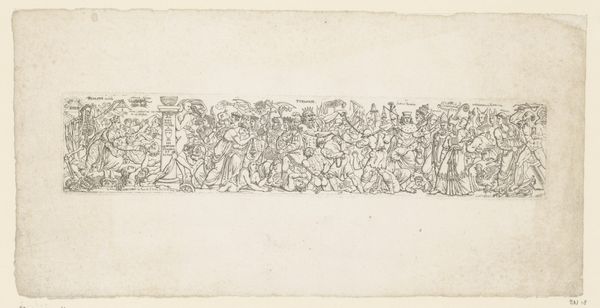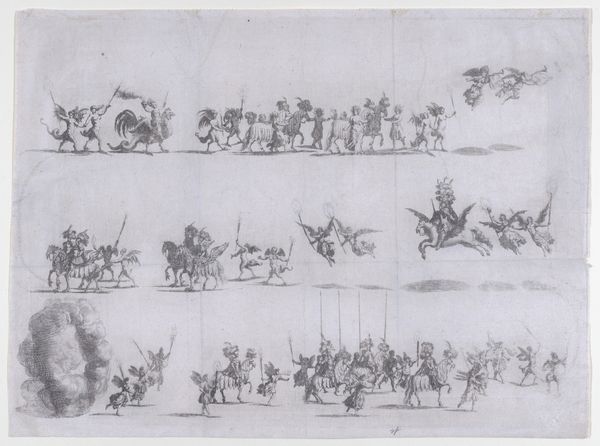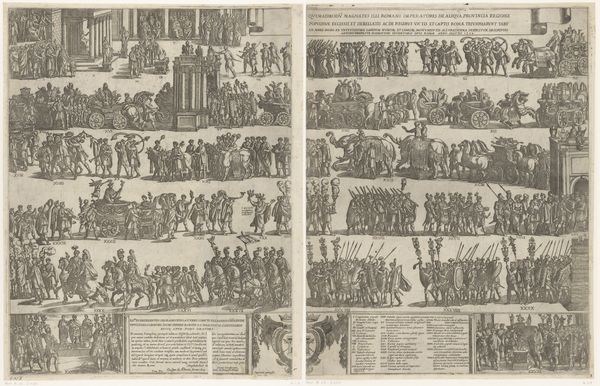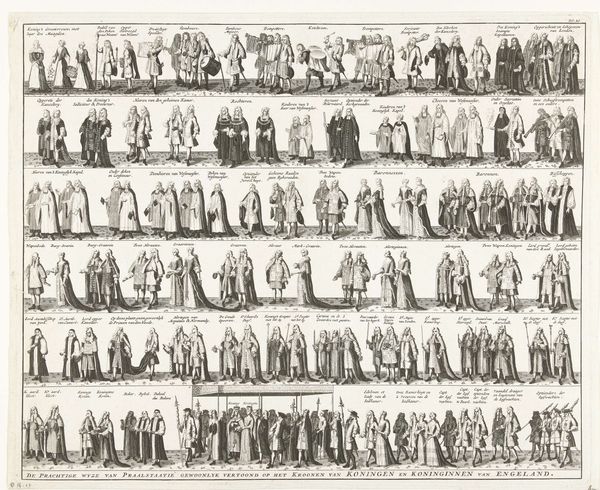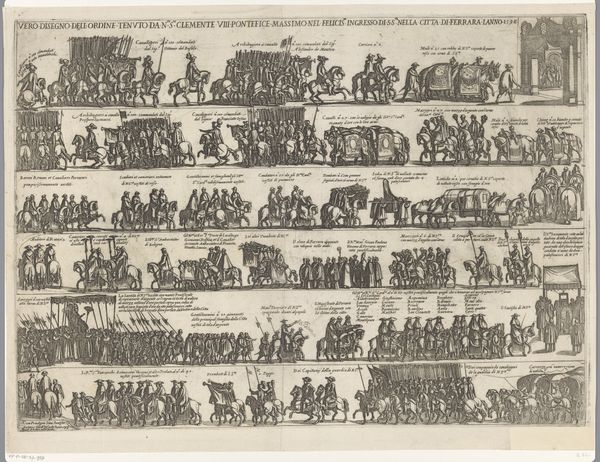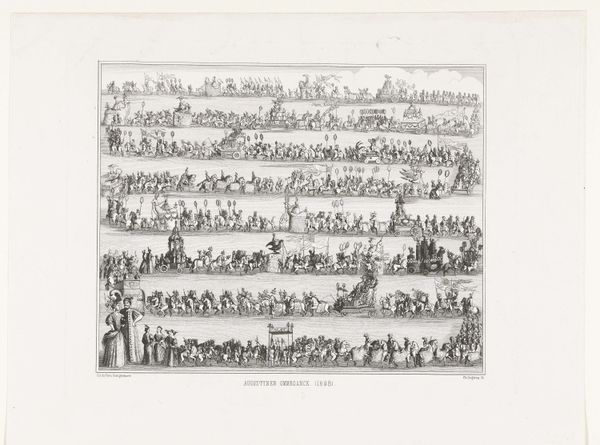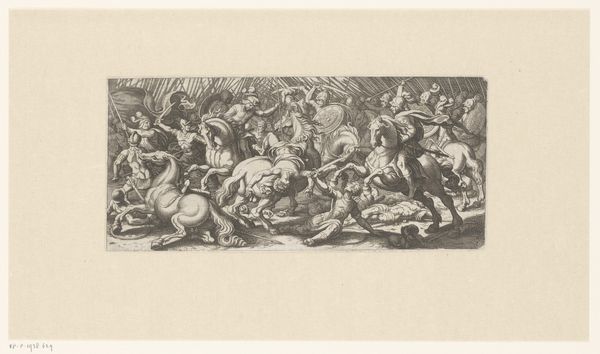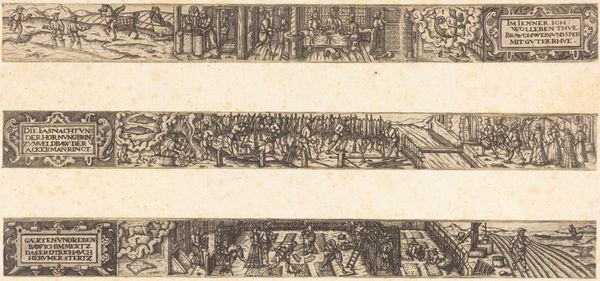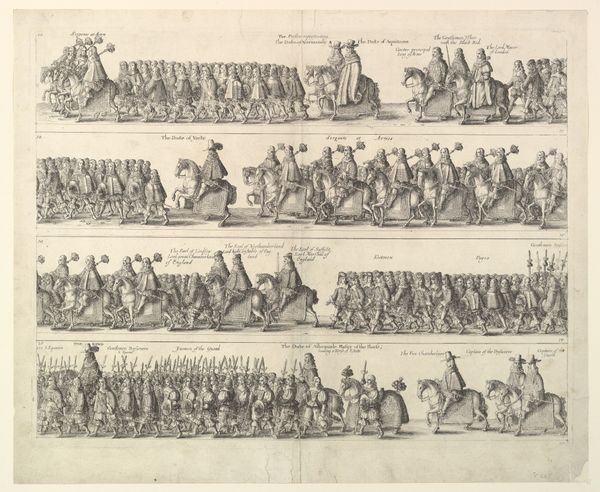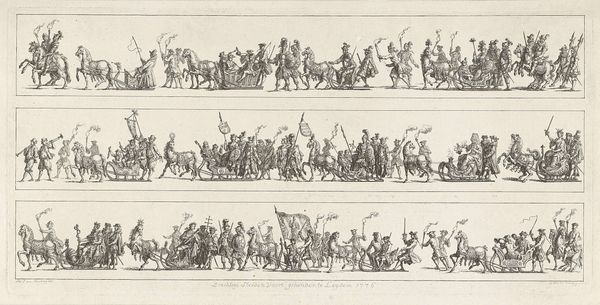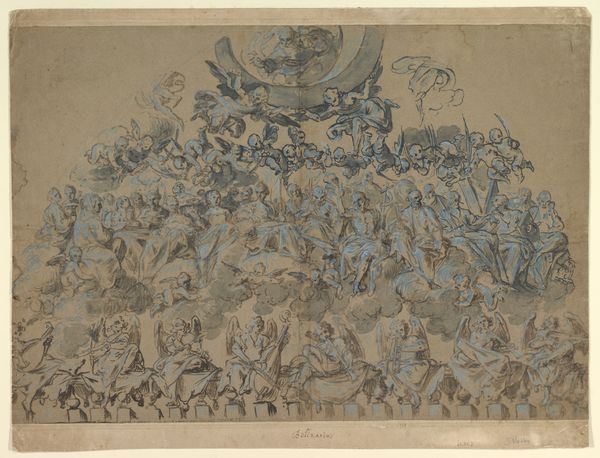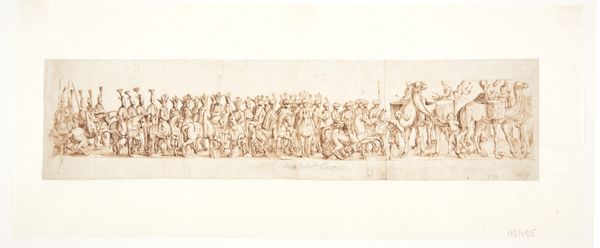
The entry of Marcantonio Colonna and the Christian army in Rome after victory at the battle of Lepanto, December 11, 1571 1571
0:00
0:00
drawing, print, engraving
#
drawing
#
weapon
#
medieval
#
narrative-art
# print
#
landscape
#
figuration
#
line
#
history-painting
#
engraving
Dimensions: Plate: 15 15/16 × 28 1/8 in. (40.5 × 71.5 cm) Sheet: 18 3/4 × 29 1/16 in. (47.7 × 73.8 cm)
Copyright: Public Domain
Curator: Look at this intriguing print, dating back to 1571, found in the Metropolitan Museum of Art. The artist, Francesco Tramezzino, captured "The entry of Marcantonio Colonna and the Christian army in Rome after victory at the battle of Lepanto, December 11, 1571". Editor: Whoa, a victory parade! The energy practically vibrates off the page, even though it’s just black lines. It's like a meticulously ordered swarm moving across the landscape, a symphony of tiny triumphant figures. Curator: Precisely! It is history meticulously laid out. Consider the Battle of Lepanto, a pivotal clash between the Ottoman Empire and the Holy League. This image commemorates not just a military victory but also a triumph for Christendom, powerfully shaped by the visual language of the time. Notice the line work and the way he captures the mass of people. Editor: That repetitive nature reminds me of war games played with toy soldiers as a child. The unwavering, determined strides speak to collective memory and myth making as much as documenting events, wouldn’t you agree? Like a collective hallucination fueled by propaganda, both chilling and captivating! Curator: The symbolism certainly speaks volumes about its purpose! Colonna embodies a classic Roman triumph, subtly echoing those victories to lend credence and perceived divine sanction to their endeavors. Note too how the procession winds through architectural features evoking permanence and power. Editor: But I keep circling back to those swarms, the lines of soldiers and horses echoing relentlessly across the print, that almost robotic feel. You’d think triumph would come with more… elation? Perhaps this hints at the brutal cost or a future yet unwritten even amidst perceived victories. Curator: Yes! Consider that this isn't mere artistic expression; it's carefully calibrated political communication, meticulously constructed imagery. These are carefully composed symbols in service of empire and religion. Editor: That cold calculus certainly casts an eerie glow on the victory. Something about seeing all these nearly identical foot soldiers makes one recall both their humanity but also erasure through a machine of war, the cost that’s swept up under triumphal parades. Curator: Absolutely, an artifact as much a reminder of victory, but about memory and power. It makes you consider our place in our moment in time! Editor: What a rush of past, present and speculation! I am left humming to think about symbols and rituals, from Lepanto to today.
Comments
No comments
Be the first to comment and join the conversation on the ultimate creative platform.
